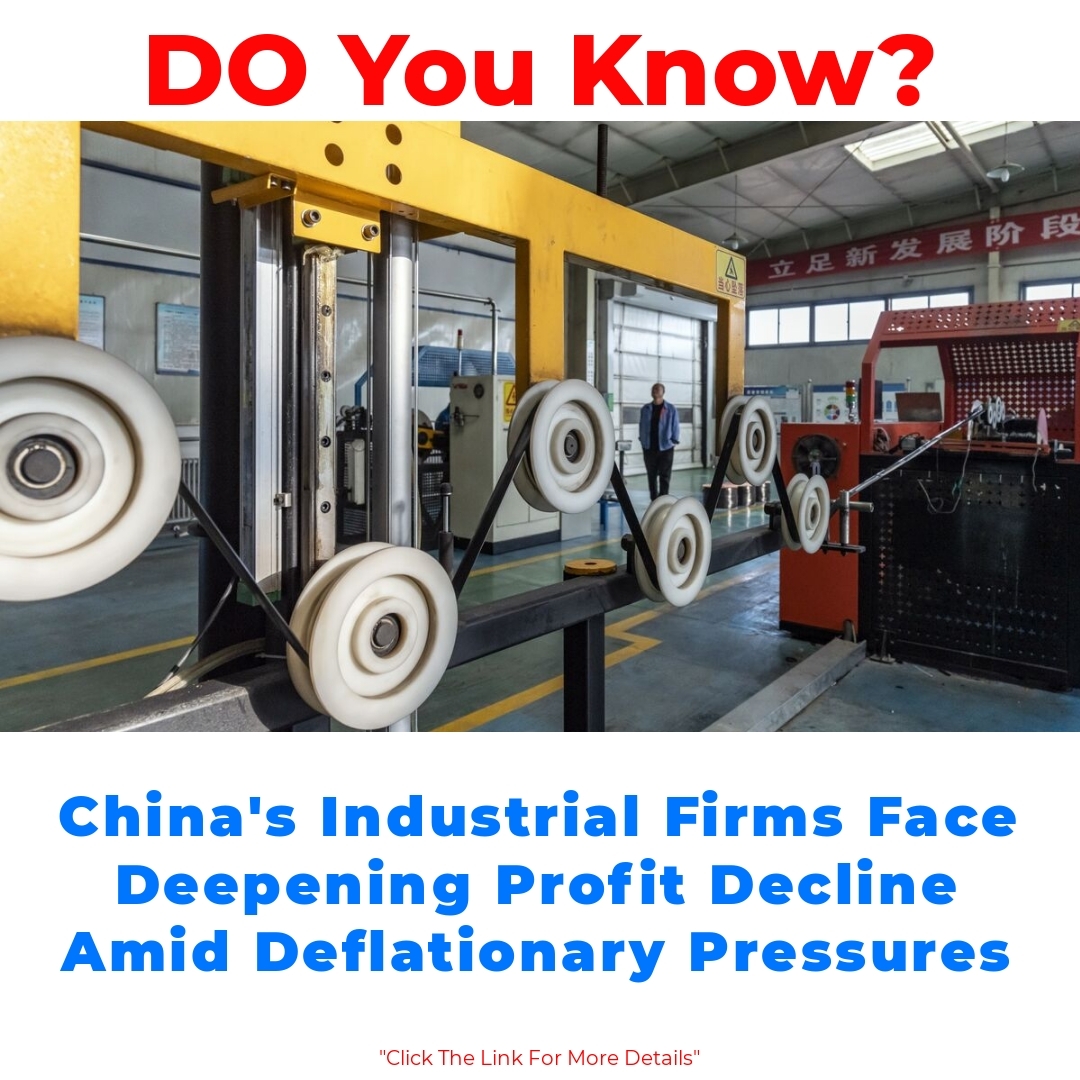Recent reports indicate a decline in profits for China’s industrial firms, raising concerns about the sector’s overall health. This downturn is significant as it unfolds in a context of deflationary pressures affecting pricing and consumer demand. Monitoring corporate performance in this environment is crucial for understanding broader economic implications.


Overview of Profits at China’s Industrial Firms in September
Profit figures for China’s industrial firms have taken a noticeable hit in September. Recent reports show a decline, with profits falling significantly compared to previous months. Specifically, the September industrial report revealed that the year-on-year profits of these firms shrank by a staggering percentage, marking a concerning shift in what has been a robust industrial landscape. By taking a closer look at these statistics, we can gain a clearer picture of the challenges ahead for China’s industrial sector.
Factors Contributing to the Decline in Profits
Deflationary Pressures
Deflationary pressures refer to the decrease in the general price levels of goods and services. In simpler terms, when prices fall, businesses struggle to maintain their profit margins. This phenomenon has particularly affected industries like manufacturing and construction, where demand has weakened, forcing companies to either lower prices or resort to heavy discounting to attract customers. As companies grapple with less revenue, the effects ripple through to their overall profitability.
Challenges to Corporate Finances
The current deflationary environment is putting a strain on the financial health of many companies. Reduced revenues mean companies have less capital to invest in operations, leading to possible cutbacks in hiring and expansion plans. Moreover, rising operational costs can squeeze profit margins, making it tough for firms to manage their finances effectively. As such, many industrial firms are finding it challenging to maintain their previous levels of profitability.
Overall Economic Impact on Firms
Beyond individual company struggles, there’s a broader economic impact at play. As consumer demand continues to decrease, companies face intensified competition and market pressure. This scenario leads to tougher pricing strategies that often result in shrinking profit margins. Macroeconomic indicators, including sluggish economic growth and declining consumer confidence, correlate with these profit declines and reflect a worrying trend for the industrial sector.
Analysis of China’s Industrial Performance
Examining the industrial performance over the last few months reveals trends that are not promising. Changes in government policies and fluctuating market conditions have played a role in influencing firm profitability. The combined effects of these elements lead to a cautious outlook, emphasizing the crucial need for firms to adapt and navigate the current landscape if they hope to recover from these profit declines.
Industry Responses to Profit Decline
In response to these troubling profit figures, many firms are searching for ways to rebound. Strategies being employed include cost-cutting measures, diversification of product lines, and innovation to stay competitive. Some companies are even looking to explore new markets or pivot their business models to counteract declining profits. These adaptations are vital for ensuring that they remain viable in the face of ongoing economic challenges.
Looking Ahead: Future Implications for China’s Industrial Sector
Looking ahead, the future for China’s industrial firms remains uncertain, but there are some trends to watch. The ongoing deflation and economic difficulties could continue to suppress profits unless significant corrective actions are taken. Government interventions, such as financial incentives or relief measures, could play a role in stabilizing this sector. Overall, the industry must remain attentive to shifts in the market and adjust accordingly to survive.
Conclusion
In conclusion, the decline in profits at China’s industrial firms for September is a concerning development, particularly in light of the impacts of deflation on their corporate finances. As companies navigate this challenging landscape, understanding the root causes and emerging strategies for adaptation will be key. The focus on “Profits at China’s industrial firms decline in September” encapsulates the findings, driving home the importance of monitoring these trends closely.
Call to Action
For those interested in the ongoing analysis of China’s industrial performance and financial health, we encourage you to stay updated on this pivotal economic situation. Understanding the dynamics behind the decline in China industrial firms profits is essential for grasping broader economic trends in the region.
FAQ Section
What caused the decline in profits for China’s industrial firms in September?
The decline in profits is largely attributed to deflationary pressures, which are reducing overall price levels. As prices drop, companies are finding it hard to maintain profit margins, especially in manufacturing and construction sectors.
How do deflationary pressures affect businesses?
Deflation leads to decreased demand for products and services. Businesses may lower prices or offer discounts to attract customers, which can hurt their revenue and, subsequently, their profitability.
What challenges are industrial firms facing in terms of corporate finances?
- Reduced revenues limit capital for investments and expansion.
- Rising operational costs are squeezing profit margins.
- Many companies may need to reduce hiring or scale back operations.
What is the broader economic impact on these firms?
Declining consumer demand contributes to intensified competition and market pressures, leading to tough pricing strategies and shrinking profit margins. Macroeconomic indicators reflect sluggish growth and lower consumer confidence, worsening the situation for the industrial sector.
What strategies are firms using to respond to profit declines?
- Implementing cost-cutting measures.
- Diversifying product lines to attract different markets.
- Innovating to stay competitive.
- Exploring new markets or pivoting business models.
What does the future look like for China’s industrial sector?
The outlook remains uncertain, with ongoing economic difficulties possibly continuing to suppress profits. Government interventions like financial incentives could help stabilize the sector, but firms must remain adaptable to survive.





